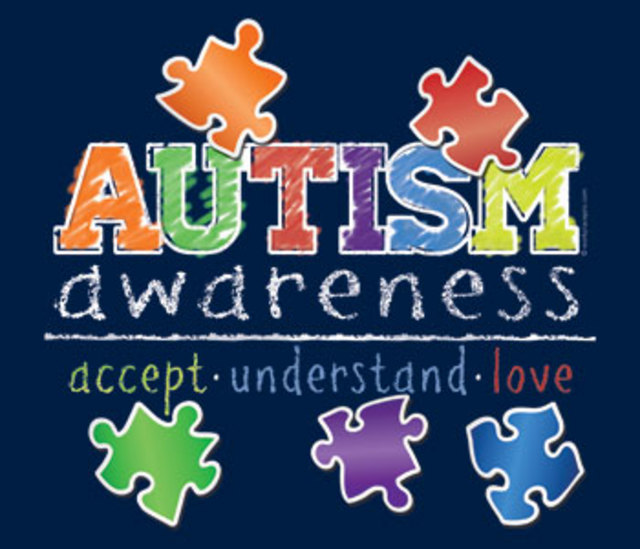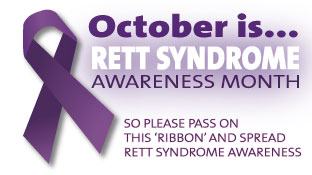
What is autism?
Autism spectrum disorder (ASD) is a range of complex neurodevelopment disorders, characterized by social impairments, communication difficulties, and restricted, repetitive, and stereotyped patterns of behavior. Autistic disorder, sometimes called autism or classical ASD, is the most severe form of ASD, while other conditions along the spectrum include a milder form known as Asperger syndrome, and childhood disintegrative disorder and pervasive developmental disorder not otherwise specified (usually referred to as PDD-NOS). Although ASD varies significantly in character and severity, it occurs in all ethnic and socioeconomic groups and affects every age group. Experts estimate that 1 out of 88 children age 8 will have an ASD (Centers for Disease Control and Prevention: Morbidity and Mortality Weekly Report, March 30, 2012). Males are four times more likely to have an ASD than females.
What are some common signs of autism?
The hallmark feature of ASD is impaired social interaction. As early as infancy, a baby with ASD may be unresponsive to people or focus intently on one item to the exclusion of others for long periods of time. A child with ASD may appear to develop normally and then withdraw and become indifferent to social engagement.
Children with an ASD may fail to respond to their names and often avoid eye contact with other people. They have difficulty interpreting what others are thinking or feeling because they can’t understand social cues, such as tone of voice or facial expressions, and don’t watch other people’s faces for clues about appropriate behavior. They may lack empathy.
Many children with an ASD engage in repetitive movements such as rocking and twirling, or in self-abusive behavior such as biting or head-banging. They also tend to start speaking later than other children and may refer to themselves by name instead of “I” or “me.” Children with an ASD don’t know how to play interactively with other children. Some speak in a sing-song voice about a narrow range of favorite topics, with little regard for the interests of the person to whom they are speaking.
How is autism diagnosed?
ASD varies widely in severity and symptoms and may go unrecognized, especially in mildly affected children or when it is masked by more debilitating handicaps. Very early indicators that require evaluation by an expert include:
- no babbling or pointing by age 1
- no single words by 16 months or two-word phrases by age 2
- no response to nameA
- loss of language or social skills
- poor eye contact
- excessive lining up of toys or objects
- no smiling or social responsiveness.
Later indicators include:
- impaired ability to make friends with peers
- impaired ability to initiate or sustain a conversation with others
- absence or impairment of imaginative and social play
- stereotyped, repetitive, or unusual use of language
- restricted patterns of interest that are abnormal in intensity or focus
- preoccupation with certain objects or subjects
- inflexible adherence to specific routines or rituals.
Health care providers will often use a questionnaire or other screening instrument to gather information about a child’s development and behavior. Some screening instruments rely solely on parent observations, while others rely on a combination of parent and doctor observations. If screening instruments indicate the possibility of an ASD, a more comprehensive evaluation is usually indicated.
A comprehensive evaluation requires a multidisciplinary team, including a psychologist, neurologist, psychiatrist, speech therapist, and other professionals who diagnose children with ASDs. The team members will conduct a thorough neurological assessment and in-depth cognitive and language testing. Because hearing problems can cause behaviors that could be mistaken for an ASD, children with delayed speech development should also have their hearing tested.
Children with some symptoms of an ASD but not enough to be diagnosed with classical autism are often diagnosed with PDD-NOS. Children with autistic behaviors but well-developed language skills are often diagnosed with Asperger syndrome. Much rarer are children who may be diagnosed with childhood disintegrative disorder, in which they develop normally and then suddenly deteriorate between the ages of 3 to 10 years and show marked autistic behaviors.
What causes autism
Scientists aren’t certain about what causes ASD, but it’s likely that both genetics and environment play a role. Researchers have identified a number of genes associated with the disorder. Studies of people with ASD have found irregularities in several regions of the brain. Other studies suggest that people with ASD have abnormal levels of serotonin or other neurotransmitters in the brain. These abnormalities suggest that ASD could result from the disruption of normal brain development early in fetal development caused by defects in genes that control brain growth and that regulate how brain cells communicate with each other, possibly due to the influence of environmental factors on gene function. While these findings are intriguing, they are preliminary and require further study. The theory that parental practices are responsible for ASD has long been disproved.
What role does inheritance play?
Twin and family studies strongly suggest that some people have a genetic predisposition to autism. Identical twin studies show that if one twin is affected, there is up to a 90 percent chance the other twin will be affected. There are a number of studies in progress to determine the specific genetic factors associated with the development of ASD. In families with one child with ASD, the risk of having a second child with the disorder is approximately 5 percent, or one in 20. This is greater than the risk for the general population. Researchers are looking for clues about which genes contribute to this increased susceptibility. In some cases, parents and other relatives of a child with ASD show mild impairments in social and communicative skills or engage in repetitive behaviors. Evidence also suggests that some emotional disorders, such as bipolar disorder, occur more frequently than average in the families of people with ASD.
Do symptoms of autism change over time?
For many children, symptoms improve with treatment and with age. Children whose language skills regress early in life—before the age of 3—appear to have a higher than normal risk of developing epilepsy or seizure-like brain activity. During adolescence, some children with an ASD may become depressed or experience behavioral problems, and their treatment may need some modification as they transition to adulthood. People with an ASD usually continue to need services and supports as they get older, but many are able to work successfully and live independently or within a supportive environment.
How is autism treated?
There is no cure for ASDs. Therapies and behavioral interventions are designed to remedy specific symptoms and can bring about substantial improvement. The ideal treatment plan coordinates therapies and interventions that meet the specific needs of individual children. Most health care professionals agree that the earlier the intervention, the better.
- Educational/behavioral interventions: Therapists use highly structured and intensive skill-oriented training sessions to help children develop social and language skills, such as Applied Behavioral Analysis. Family counseling for the parents and siblings of children with an ASD often helps families cope with the particular challenges of living with a child with an ASD.
- Medications: Doctors may prescribe medications for treatment of specific autism-related symptoms, such as anxiety, depression, or obsessive-compulsive disorder. Antipsychotic medications are used to treat severe behavioral problems. Seizures can be treated with one or more anticonvulsant drugs. Medication used to treat people with attention deficit disorder can be used effectively to help decrease impulsivity and hyperactivity.
- Other therapies: There are a number of controversial therapies or interventions available, but few, if any, are supported by scientific studies. Parents should use caution before adopting any unproven treatments. Although dietary interventions have been helpful in some children, parents should be careful that their child’s nutritional status is carefully followed.


